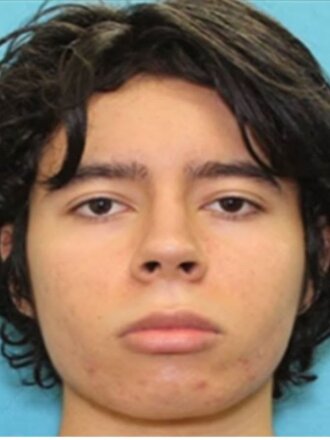And the legislation that has emerged in the past year, in Washington and in the states, honors that assumption. Among other provisions, the Bipartisan Safer Communities Act that cleared Congress in June includes $250 million in block grants for community-based mental health services and $140 million in training money for pediatric mental health providers. In signing the bill, President Biden promised that the money would “better provide mental health care and connect patients to mental health experts.” That’s not all that Democrats wanted, but it’s something both parties could accept.
Meanwhile, some of the states have been doing something similar. A California law provides mental health funding to 79 cities. San Bernardino, for example, is getting state money for “street outreach, trauma-informed and culturally relevant interventions.” Pomona will receive $5.1 million for community-based therapy.
There’s no disputing the horrific scope of the problem, virtually everywhere in the country. In the most recent year for which numbers are available, 40,620 people in America died from gun violence. About 15,000 of these deaths were homicides; the rest were mostly suicides. Getting shot is now the leading cause of death for young Black men, exceeding deaths from cancer, influenza, asthma, pneumonia, AIDS/HIV and opioids combined.
It’s not entirely clear what mental health treatment can do about this: The best estimate is that only about 4 percent of violent criminals are mentally ill. Mentally disturbed people are more likely to die as victims of gun violence than they are as perpetrators of it.
Still, some studies have indicated that as many as one-third of those who instigate mass shootings suffer from some form of clinical mental illness. The American Psychological Association has declared that “the mental health community must take the lead in advocating for community-based collaborative problem-solving methods in taking on the lethal combination of guns and mental disturbance.”
Unfortunately, that leaves the question of just what those methods are. Consider San Francisco. Its Violence Reduction Initiative provides a $6 million grant to police to work with potential violent offenders. In one of its early phases, this program provided “life coaches” to a select group of troubled young individuals. No doubt this was done with the best intentions, but it doesn’t provide any clues to a large-scale effort against violent mental disturbance.
THE REALITY IS THAT MILLIONS OF WORDS ARE BEING WRITTEN about the need to combat violent mental illness with therapy. But very little is being written about just what that therapy is supposed to be.
There’s no doubt that a friendly, sympathetic adult can sometimes provide meaningful help to a troubled teenager. But to work on a large scale, mental health treatment has to be based on a commonly accepted theory of therapeutic effectiveness. That’s where things start to get really tricky.
For most of the 20th century, the most common ways to deal with potentially violent young people were to place them in talk therapy or residential detention. Talk therapy, usually based in some way on Freudian theories, was too prolonged and too expensive to be an effective treatment for more than a small number of participants. Residential detention was eliminated for all but the most egregious cases by the 1970s.
The replacement was medication. Lithium and other drugs proved to have dramatic successes with depressives and some psychotics. But these treatments were not without flaws. The patient had to be trusted to take the medicine on a regular basis, which many were not willing to do. More disturbing, some studies suggested that anti-depressive medications actually could increase the potential for violent behavior on the part of some teenagers who took them.
In the past two decades, mental health care has shifted heavily in the direction of cognitive behavioral therapy, developed in the 1960s at the University of Pennsylvania by Aaron Beck. CBT has achieved dramatic results with a large number of depressed and anxious people. It is, in many ways, breathtakingly simple. It involves training patients to banish the negative thoughts that are the source of their problems. The course of treatment generally consists of between five and 20 sessions, each 30 to 60 minutes in length.
THERE ARE PLENTY OF REASONS to admire what CBT has accomplished, but it shares a fundamental limitation with medical intervention. The patients have to see themselves as mentally damaged and in need of help. Otherwise they won’t sit still for all those sessions. Most young people with pre-violent thoughts and habits aren’t likely to see themselves that way.
In fact, the evidence is that most of them view themselves as courageous fighters against an outside world that has mistreated them. They are, for the most part, angry, resentful, bitter young men who want to get even. Often they become hooked by conspiracy theories and extremist groups. Teaching them gradually to avoid bad thoughts is not a high-percentage strategy. Neither is medicine.
Prominent psychiatrists are willing to admit this. “We don’t have medicines for things like resentment, or hatred against the world,” psychiatry professor Amy Barnhorst of the University of California, Davis, told theNew York Times a few years ago.

(Twitter)
This doesn’t work, in the end, because these people believe there is nothing wrong with them. Several years ago, the widely respected University of California, Los Angeles, anthropologist Alan Page Fiske wrote a book called Virtuous Violence, in which he laid out these ideas in an utterly convincing way. “The fact is,” Fiske wrote with his colleague Tage Shakti Rai, that violent people “often feel — and explicitly judge — that in many contexts it is good to do these kinds of violence to others. They believe that in many cases hurting or killing others is not simply justifiable — it is absolutely, fundamentally right. … We wish this weren’t true — we abhor it. But it is true, so to understand or reduce violence, we must recognize its moral roots.”
ALL OF THIS HAS BEEN COMPOUNDED in recent years by the fame that the Internet and social media dangle in front of the aspiring violent offender. “Somehow over the past 20-30 years,” Fiske told me recently, “a model has emerged of getting famous by killing a lot of people — that’s become cool. Especially for a person who feels ignored, belittled, mocked, excluded, treated as insignificant. Kill a dozen people and now you’re the opposite of that — you’re important, and for a few minutes, you are the feared center of attention.” It is not a phenomenon that psychiatry, clinical psychology or social work are currently structured to address.
None of this is meant to disparage mental health treatment in crisis intervention. It can be valuable in helping victims of mass shootings and families that have been bereaved by those crimes. What it will not do, at least not to any appreciable degree, is change the behavior of disturbed young people who believe society is out to hurt them and who want to get even.
If we want the epidemic of mass shooting to subside, the answer is not to provide therapy to potential perpetrators. It’s to make sure they don’t have guns. Most states already have laws denying weapons to those who have been diagnosed as mentally ill. They haven’t accomplished much. Most of the people who commit crimes of mass violence have no previous tangible misconduct to warn us. We don’t possess a crystal ball. The way to take assault weapons and many other lethal firearms out of the hands of the truly dangerous is to take them away from everyone. I realize how far we are from accomplishing this. But one way to start is to recognize reality.
Related Content














